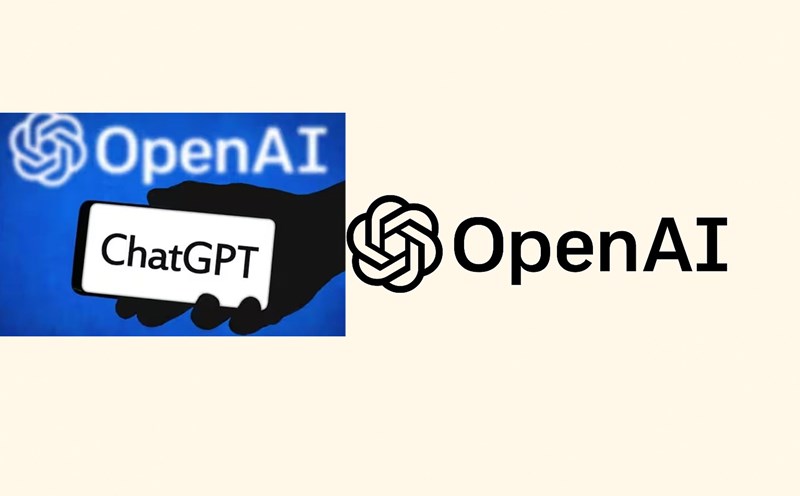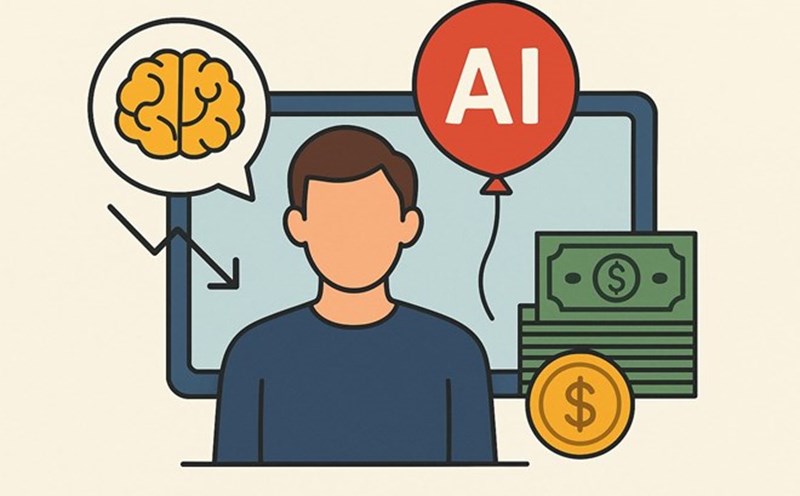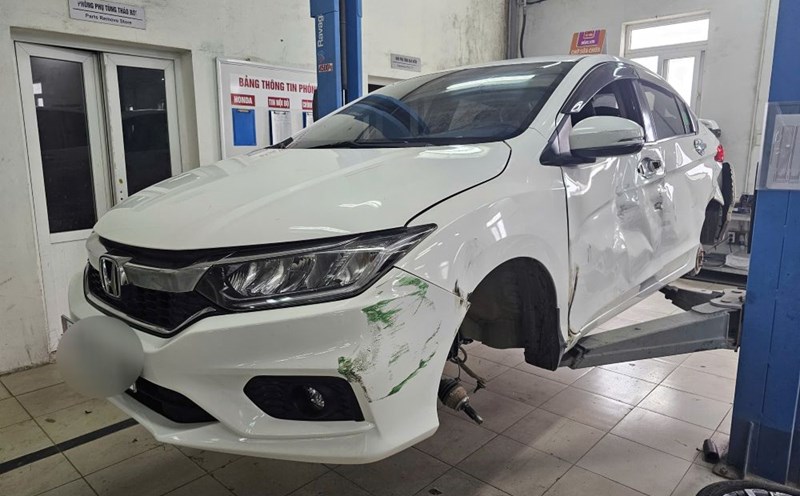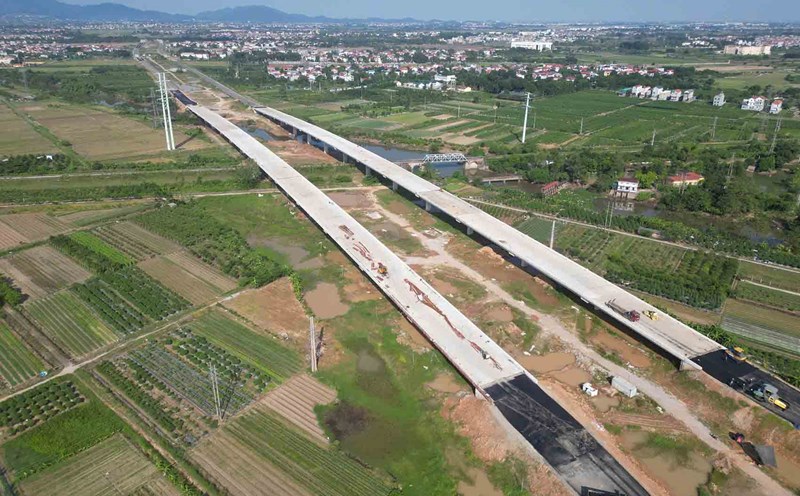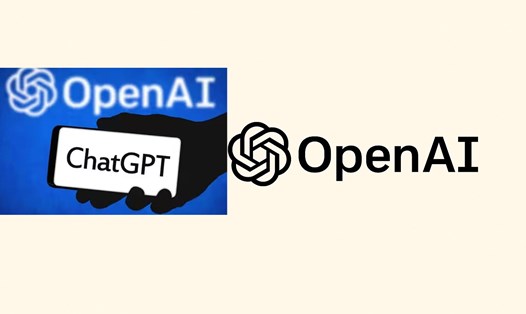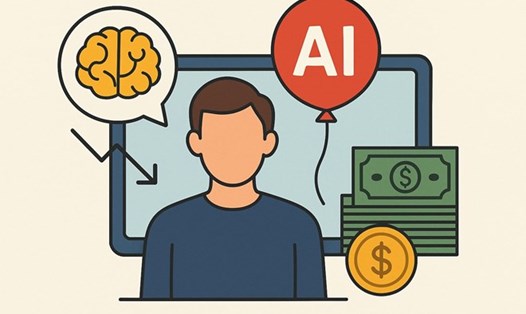With just a brief command, the man stepping into the car displayed at the 2025 World Smart Industry Exhibition in Chongqing can feel the cool breeze, the sound of electronic music and the automatic seat activating the massage mode. A few kilometers further, a smart house opens curtains, adjusts light and temperature to welcome the owner. The images that seem to only exist in science fiction films are becoming the daily lives of millions of Chinese people.
Never before has technology blended deeply with life in China like today. AI is no longer a concept exclusively for researchers or high-tech companies but is present in all fields - from education, healthcare, transportation to State management. This explosion is the result of a long-term vision, an open strategy for cooperation and an aspiration for innovative economic development of the world's most populous country.
With the scale of the AI industry exceeding 700 billion yuan by 2024 and a growth rate of more than 20% per year, China is proving its position as a global technology center. But what makes the world interested is not only impressive numbers but also the way AI is reshaping people's daily lives - making technology more approachable, useful and humane than ever.
The rapid development of Chinese AI
In less than a decade, China's artificial intelligence industry has undergone an incredible leap. From robot manufacturing, developing large language models to operating smart urban systems, China is building a comprehensive "intellectual economy", becoming the locomotive of technological innovation in Asia and the world.
According to the latest data, the scale of China's AI industry will surpass 700 billion yuan by 2024, growing by an average of more than 20% per year. In particular, the country has maintained its position as the world's largest industrial robot market for 12 consecutive years. The output of service robots alone increased by 34.3% compared to the previous year, reaching more than 10.5 million units in 2024.
In addition to the impressive growth rate, there is a huge ecosystem built on the philosophy of "technology towards people". Enterprises such as Haifu Medical, iFlyTek or Zelos have become symbols of that spirit of innovation. Haifu Medical, a pioneer in the field of ultrasound surgical knives for tumor treatment, has exported equipment to more than 35 countries and territories, helping more than 330,000 patients receive non-invasive treatment. In 2024, the company successfully performed the world's first 5G ultrasound surgery, remote control in Kenya - a milestone demonstrating the global connectivity of Chinese medicine.
Not stopping at commercial products, China also proactively shares its "intellectual property" with the world. In 2024, the China Meteorological Administration launched the MAZU multiple disaster early warning system and donated the MAZU- Urban model to 35 countries in Asia, Africa and the Atlantic region for free. These actions show that China is pursuing a development model that focuses on cooperation, instead of keeping its own technology secret.
The behind-the-scenes is national policies. The Chinese government has launched the AI Plus initiative, aiming to connect artificial intelligence with production, governance and services. Organizations such as the World AI Cooperation Organization or the Global AI Governance Action Plan were established to expand cooperation, share knowledge and standardize technology ethics.
That rapid development not only brings economic achievements but also helps the Chinese people access a more modern life than ever. From robots caring for the elderly, health monitoring sleeping lights to blurred speech equipment to support the blind - all of which demonstrate the philosophy of "technology for people". According to many experts, China is entering a period when AI has become an essential infrastructure such as electricity or water, serving all the needs of modern society.
From private homes to classrooms, hospitals
If in previous years, AI was mainly present in the fields of manufacturing and research, it has now become a part of daily life in China. In a house in Hangzhou, people can use their voice to control light, music or room temperature. In the classroom in Guyiang, students interact with the smart board and receive immediate feedback thanks to the AI system. In a hospital in Beijing, AI pediatricians and medical staff are participating in the consultation, contributing to reducing workload and improving treatment effectiveness.
Those applications are no longer being tested. In the field of education, iFlyTek technology has completely changed the way of teaching and learning in China. Teachers can assign assign assignments, score and analyze results in real time, thereby developing a teaching plan suitable for each student. Students use AI to practice pronunciation, expand sentence capital, and even participate in simulated conversations with real voices from movies and news. In the remote mountainous areas of Guizhou, where learning conditions are limited, AI helps to significantly narrow the gap between rural and urban areas.
In large hospitals, AI is a strong support in diagnosis and treatment. In Beijing, China's first "AI pediatrician" put into use in early 2025, is likely to participate in consultations with experts and analyze medical records data in a few seconds. In Quang Dong, brain-mechanical interface technology (BCI) allows paralyzed patients to control wheelchairs, hospital beds or household appliances with just a thought. Since 2019, more than 50 patients at Quang Dong Labor Trauma Rehabilitation Hospital have benefited from this technology, helping them regain some control of their lives.
AI is also contributing to the field of State management. In Son Tay province, the smart government platform helps new mothers look up administrative procedures, register their household registration and vaccination schedule in just a few seconds. In Heilongjiang, AI is integrated into citizen hotlines, automatically recording, transferring documents and routing complaints to the correct handling agency. In Tran Chau (Hunan), traffic police use DeepSeek to monitor videos, promptly detect congestion and send automatic warnings.
In the field of digital economy, JD develops yan Xi digital personality - a virtual assistant serving more than 9,000 businesses, creating an estimated value of 14 billion yuan. "Digital employees" like Yan Xi can format documents, synthesize data and create reports with an accuracy of more than 95%, becoming a powerful arm for businesses.
Not only that, experts believe that AI will soon become a "common utility" - present everywhere, from private homes, offices to the streets. However, they also admit that AI still faces many challenges: The phenomenon of "AI vigilance", cognitive limitations and ethical issues. Therefore, in parallel with the development process, China is making efforts to build a comprehensive legal framework and technology governance, towards a future where AI is not only powerful but also reliable.
From industrial robots to virtual doctors, from smart classrooms to urban management, artificial intelligence has become the driving force shaping the lives of more than 1.4 billion Chinese people. That "intellectualisation" journey is not only a technological revolution but also a transformation in the way people live, learn and care for each other - a testament to the era when technology truly serves people.


